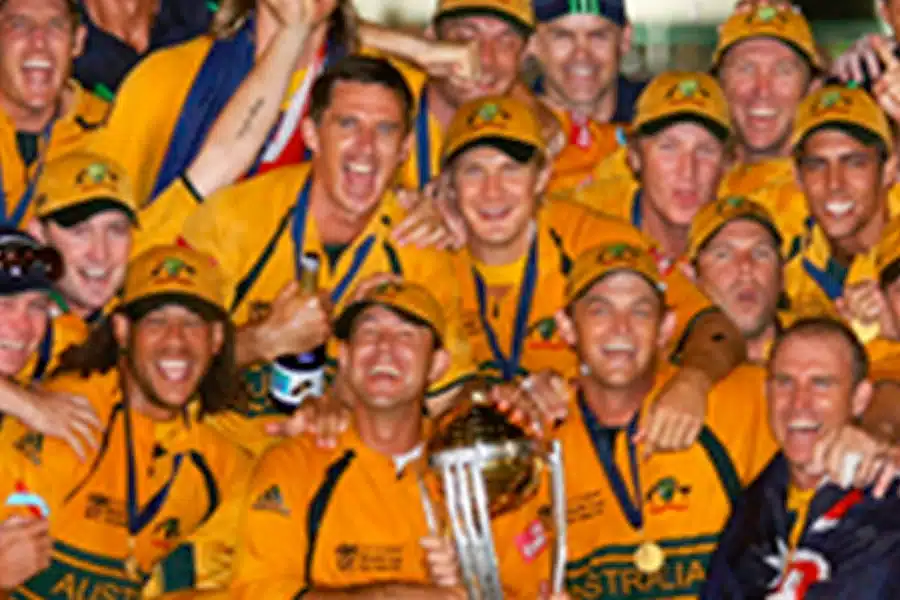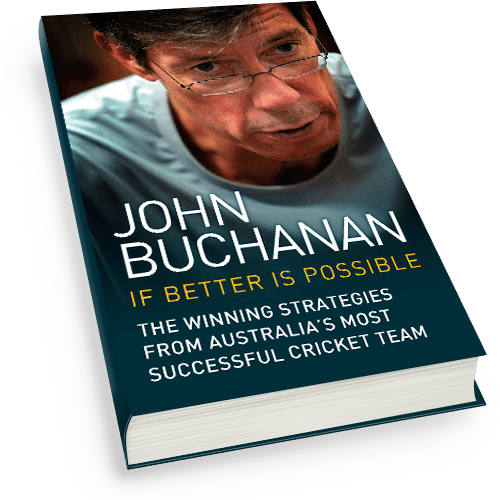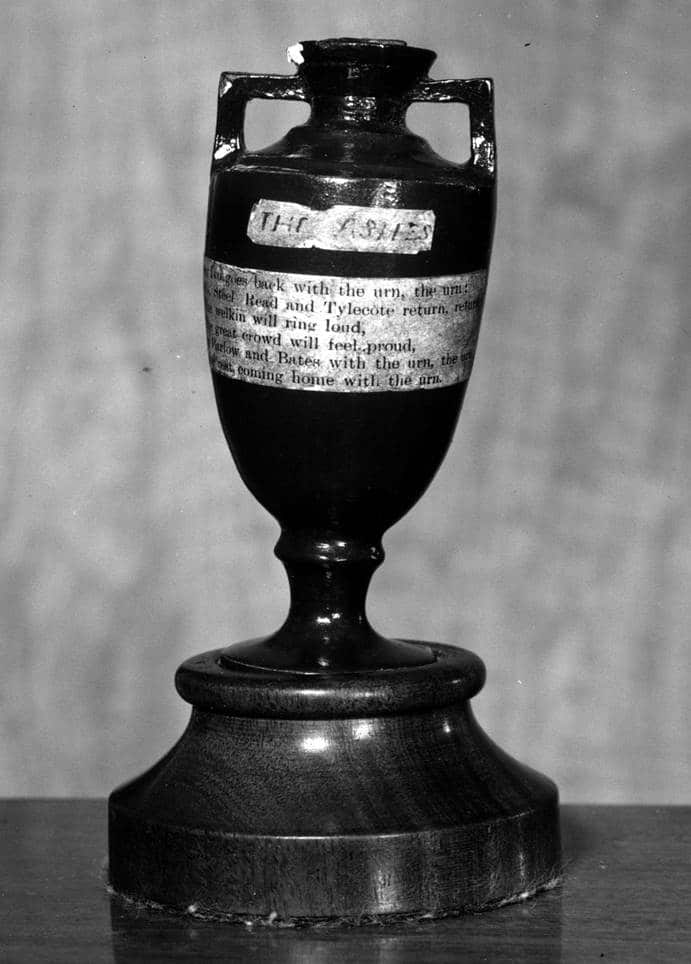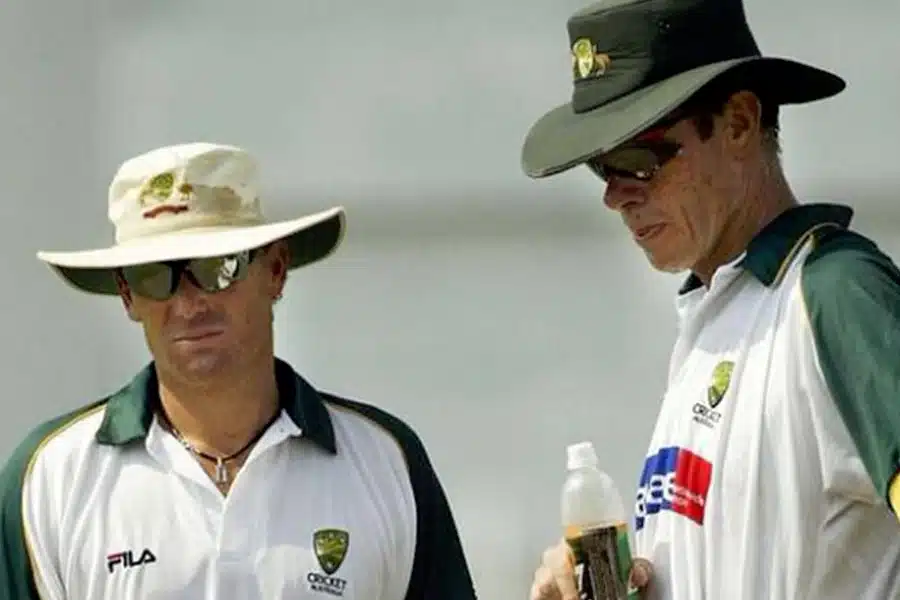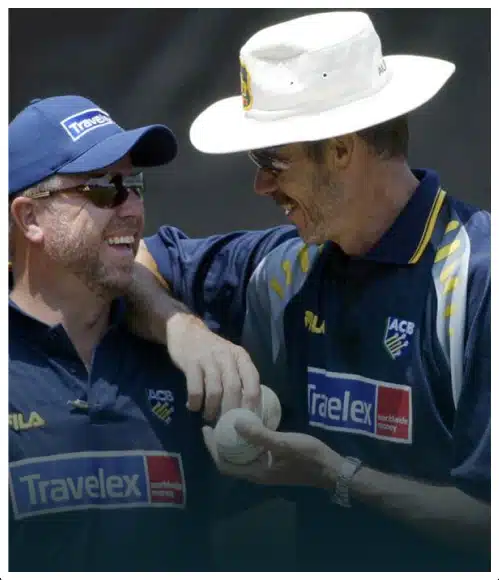This is a three part article looking at history, current rankings, and what lies ahead.
Part 3 – Adapt or say goodbye to any chance of winning!
As with every World Cup, there are a range of conditions with which teams need to contend if they want to succeed.
Some teams such as England, India and Sri Lanka have already travelled to Australia and New Zealand. The West Indies have been playing in South Africa. The first warm-up matched for the 2015 World Cup begin February 8th , and for the two teams that go all the way to the Final, the tournament concludes March 29th . It is a long period of time over which to sustain performance.
Australia and New Zealand are wonderful places to play cricket, with wonderful grounds, facilities and plenty of amenities outside the cricket ground to make the whole world cup experience very enjoyable. But there are big distances to travel; for instance England are doing Sydney, Melbourne, Adelaide, Christchurch and Wellington (twice); India fly at different times to Melbourne, Adelaide, Perth, Auckland and Hamilton. New Zealand on the other hand, does not travel outside New Zealand for the qualifying rounds which will be advantageous (although as the statistics have shown, the BlackCaps record at home is not imposing). However, unless they finish 4th in their pool which would mean they would play the winner of Pool B in Wellington, then they will travel to Australia to play a quarter-final. Pending results and New Zealand getting through, they may find themselves in semi-final in Auckland.
Different locations present different wickets, and apart from Perth and Brisbane which will always be quicker and bouncier than all other grounds and favouring Australia, South Africa and England, the most interesting factors will be –
- The drop-in wickets in Adelaide, Melbourne, Auckland and Wellington which will assist teams such as India, Sri Lanka, Bangladesh and Pakistan
- The grounds on which the dimensions favour hitting square or straight such as Adelaide, Auckland, Hamilton, Napier
And while the new ODI rules have been in place for a little time,
1) The effects of power plays – the first and the timing of the second will impact the results.
2) The two new balls will certainly reduce the effects of reverse swing and a softer ball lessening the strike power of batsmen.
3) The field restrictions will place greater emphasis on. execution of bowling plans and strong support from the fielding unit, and,
4) The ability to bowl an additional bouncer, especially with a harder ball will advantage those teams that will use pace bowlers as a weapon throughout the tournament.
And there are many other factors that all teams will need to contend with if they are to progress to the business end of the tournament, such as –
- As already mentioned, teams prefer to play different styles of cricket, for example, SA, AUS, NZ play differently than SL, IND; and these teams play differently than PAK, ENG & WI – can they adapt their styles to the different grounds and conditions and maintain consistency of performance?
- Dew and weather factors, or reduced games because of inclement weather introducing D/L methods, will play a role at some point and may affect teams positions on NRR through qualifying and into finals series?
- Statistically, LBW is the lowest form of dismissal in Australia – therefore teams that can either deliver or combat reverse swing may gain some advantage?
- Left arm fast bowlers are good counters to batsmen who possess 360 degree shot making ability – a few teams don’t have them, e.g. ENG, IND
- Some teams have a long history of scoreboard pressure affecting performance in World Cups – will this continue?
- Which teams will be off to a flying start, and can it be maintained through a long and arduous tournament of wickets which will drying and wearing; and with a playing group who in the main will not be in their best physical condition after a long summer of cricket? Which teams can continue to build momentum through the tournament best?
Below are the comparative winning teams statistics from 2003, 2007 and 2011. In terms of the numbers I think we will see the winning team, or at least those in the semi-finals producing statistics somewhere between what Australia achieved in 2003 and 2007.
Australia in 2003 & 2007
| Indicators for World Cup | Batting -2003 | Batting – 2007 | Bowling – 2003 | Bowling – 2007 |
| Average | 47.16 | 66.30 | 18.18 | 18.82 |
| runs/over | 5.42 | 6.54 | 4.22 | 4.66 |
| Batting Strike rate (runs/100balls) | 90.41 | 109.07 | 70.59 | 77.33 |
| Low Eco Rate (LER) x Low St.Rate(LSR) | 283.00 | 397.8 | 109.35 | 113.40 |
| Bowling Strike rate (balls bowled/wicket) | 52.16 | 60.79 | 25.89 | 24.33 |
| Scoring rates/100balls | ||||
| ss/balls | 46.25 | 51.84 | 34.49 | 39.62 |
| balls/ss | 2.16 | 1.93 | 2.90 | 2.52 |
| 4s | 9.48 | 13.01 | 7.30 | 7.78 |
| 1s | 30.64 | 32.71 | 22.91 | 26.54 |
| last 10(avg run) | 74.25 | 92 | 56 | 50 |
| Centuries and partnerships | ||||
| Centuries | 3 | 6 | 0 | 1 |
| 100+partnerships | 5 | 8 | 1 | 4 |
| Fielding stats | ||||
| % run out dismissals | 7.14 | 9.30% | 4.95%(all were direct hits) | 5.82% |
| cts/st dismissals | 71.42% | 58.14% | 64.35 | 56.31% |
| Lbw & bowled dismissals | 21.42% | 32.55% | 30.69% | 37.86% |
| 2003 -Batsman | Mt | Runs | HS | Centuries | Avg | St.rate | BoundaryRate | Scoring rate | Roleplay |
| Symonds | 9 | 326 | 143* | 1 | 163 | 90.55 | 10.55 | 48.61 | 22.41% |
| Ponting | 11 | 415 | 140* | 2 | 51.87 | 87.92 | 8.89 | 48.30 | 30.97% |
| Gilchrist | 10 | 408 | 99 | 0 | 40.8 | 105.42 | 16.23 | 46.39 | 27.41% |
| Hayden | 11 | 328 | 88 | 0 | 32.8 | 80 | 10.24 | 39.75 | 31.99% |
| Lehmann | 10 | 224 | 56* | 0 | 44.80 | 82.35 | 8.45 | 47.42 | 17.41% |
| Martyn | 10 | 323 | 88* | 0 | 64.60 | 81.77 | 5.82 | 55.69 | 28.77% |
Role play % = in score minus end score = role play runs, viz % of Team runs when a particular batsman is at the crease.
| 2003 – Bowlers | Mt | Overs | Mdns | Runs | Wkts | Best | Avg | Eco. | B/W | 4w/in | 5w/inn |
| McGrath | 11 | 87 | 18 | 310 | 21 | 7-15 | 14.76 | 3.56 | 24.8 | 0 | 1 |
| B Lee | 10 | 83.1 | 9 | 394 | 22 | 5-42 | 17.9 | 4.73 | 22.6 | 0 | 1 |
| Bichel | 8 | 57 | 7 | 197 | 16 | 7-20 | 12.31 | 3.45 | 21.3 | 0 | 1 |
| Hogg | 10 | 75.4 | 4 | 322 | 13 | 3-46 | 24.76 | 4.25 | 34.9 | 0 | 0 |
| Gillespie | 4 | 30 | 4 | 98 | 8 | 3-13 | 12.25 | 3.26 | 22.5 | 0 | 0 |
| Harvey | 6 | 36 | 3 | 157 | 8 | 4-58 | 19.62 | 4.36 | 27 | 1 | 0 |
| 2003 – Bowlers | % wkts in first 2 balls of an over | % wkts in last 2 balls of an over | % Consecutive maidens | %mdn | % L 4 |
| McGrath | 28.57 | 28.57 | 5.77 | 20.79 | 65.82 |
| B Lee | 31.82 | 50.00 | 0.00 | 10.83 | 51.74 |
| Bichel | 25.00 | 56.25 | 5.26 | 12.28 | 68.42 |
| Hogg | 61.54 | 30.77 | 0.00 | 5.31 | 59.68 |
| Gillespie | 37.50 | 25.00 | 0.00 | 13.33 | 76.67 |
| Harvey | 37.50 | 25.00 | 0.00 | 8.43 | 53.37 |
| 2007 – Batsmen | Mt | Runs | HS | Centuries | Avg | St.rate | BoundaryRate | Scoring rate | Roleplay |
| Hayden | 11 | 659 | 158 | 3 | 73.22 | 101.07 | 13.49 | 48.92 | 50.68% |
| Ponting | 11 | 539 | 113 | 1 | 67.37 | 95.39 | 11.32 | 51.15 | 37.88% |
| Gilchrist | 11 | 453 | 149 | 1 | 45.3 | 103.89 | 15.59 | 44.95 | 30.12% |
| Clarke | 11 | 436 | 93* | 0 | 87.2 | 94.98 | 10.23 | 55.55 | 34.93% |
| Symonds | 9 | 189 | 63* | 0 | 63 | 98.43 | 11.97 | 52.08 | 13.67% |
| Watson | 8 | 145 | 65* | 0 | 145 | 170.58 | 22.35 | 78.82 | 9.61% |
| 2007 – Bowler | Mt | Overs | Mdns | Runs | Wkts | Best | Avg | Eco. | B/W | 4w/in | 5w/in |
| McGrath | 11 | 80.5 | 5 | 357 | 26 | 3-14 | 13.73 | 4.41 | 18.6 | 0 | 0 |
| Tait | 11 | 84.3 | 1 | 467 | 23 | 4-39 | 20.3 | 5.52 | 22 | 1 | 0 |
| Hogg | 11 | 82.5 | 6 | 332 | 21 | 4-27 | 15.8 | 4 | 23.6 | 2 | 0 |
| Bracken | 10 | 71.4 | 10 | 258 | 16 | 4-19 | 16.12 | 3.6 | 26.8 | 1 | 0 |
| 2007 – Bowlers | Balls/scoring shots | Boundary rate/100balls | %mdn |
| McGrath | 2.70 | 9.69 | 6.21 |
| Tait | 2.52 | 11.24 | 1.18 |
| Hogg | 2.37 | 4.86 | 7.30 |
| Bracken | 2.98 | 6.51 | 14.00 |
India 2011
| Indicators of 2011 World Cup | Batting | Bowling |
| Avg | 39.85 | 29.87 |
| r/o | 5.82 | 5.21 |
| st.rate | 96.71 | 86.64 |
| Low Eco Rate (LER) x Low St.Rate(LSR) | 239.70 | 179.57 |
| b/w | 41.21 | 34.47 |
| Scoring rate/100balls | ||
| ss/balls | 52.05 | 49.69 |
| balls/ss | 1.92 | 2.01 |
| 4s | 10.33 | 8.09 |
| 1s | 36.01 | 35.90 |
| Centuries and partnerships | ||
| Centuries | 5 | 3 |
| 100+partnerships | 6 | 2 |
| Fielding stats | ||
| % run out dismissals | 9.68% | 9.21% |
| (cts/st )dismissals | 56.00% | 50.00% |
| L B W & Bowled dismissals | 33.90% | 36.80% |
| Batsmen | Mt | Runs | HS | Centuries | Avg | St.rate | Boundary Rate |
| Yuvraj Singh | 9 | 362 | 113 | 1 | 90.5 | 86.19 | 10.00 |
| Tendulkar | 9 | 482 | 120 | 2 | 53.55 | 91.98 | 11.45 |
| Dhoni | 9 | 241 | 91* | 0 | 48.2 | 81.69 | 7.46 |
| Sehwag | 8 | 380 | 175 | 1 | 47.5 | 122.58 | 18.06 |
| Gambhir | 9 | 393 | 97 | 0 | 43.66 | 85.06 | 8.01 |
| Kohli | 9 | 282 | 100* | 1 | 35.25 | 82.21 | 7.58 |
| Bowlers | Mt | Overs | Mdns | Runs | Wkts | Best | Avg | Eco. | B/W | 4w/in | 5w/in |
| Z Khan | 9 | 81.3 | 4 | 394 | 21 | 3-20 | 18.76 | 4.83 | 23.2 | 0 | 0 |
| Yuvraj Singh | 9 | 75 | 2 | 377 | 15 | 5-31 | 25.13 | 5.02 | 30 | 0 | 1 |
| M Patel | 8 | 65.5 | 1 | 353 | 11 | 4-48 | 32.09 | 5.36 | 35.9 | 1 | 0 |
| Harbhajan | 9 | 87 | 2 | 390 | 9 | 3-53 | 43.33 | 4.48 | 58 | 0 | 0 |
All statistics and game analysis provided by senior analyst, Krishna Tunga – http://allthatcricket.com/

